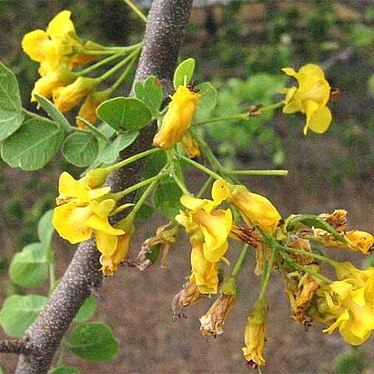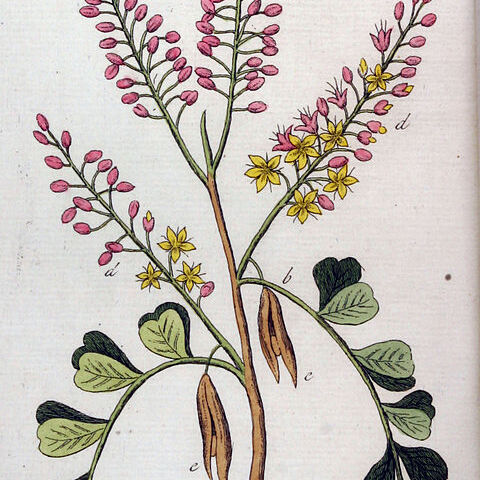Tree or shrub, sometimes with spiny branchlets. Stipules caducous. Leaves spiral, paripinnate or partially bipinnate. Leaflets few pairs per leaf. Inflorescences crowded on short shoots, axillary, terminal, racemose. Flowers small, bisexual; bracts minute, absent at anthesis; bracteoles none. Hypanthium short. Calyx covering the rest of the flower in bud, slightly unequal, 5-lobed, lobes imbricate, soon deciduous. Petals 5, imbricate, subequal. Stamens 10, fertile, free; filaments pilose at base; anthers introrse. Ovary shortly stipitate, free, 2-or 3-ovuled; style filiform; stigma small, terminal. Pods lanceolate or elliptic-oblong, compressed, two-valved, valves thin. Seeds transversely oblong, exalbuminous.
Trees or shrubs. Leaves abruptly pinnate or bipinnate by lower pinnae again divided; stipules spinescent, deciduous; stipels absent. Flowers yellow, small, in axillary, short, sparse racemes. Receptacle short. Calyx 5-lobed; lobes unequal. Stamens 10, free; filaments hairy at bases; anthers uniform, opening by lateral slits. Ovary shortly stalked, 2-or 3-ovuled; style filiform; stigma terminal, capitate. Legume compressed, oblong or lanceolate, membranous, splitting along middle of valves. Seeds transversely oblong, without endosperm; radicles straight.


